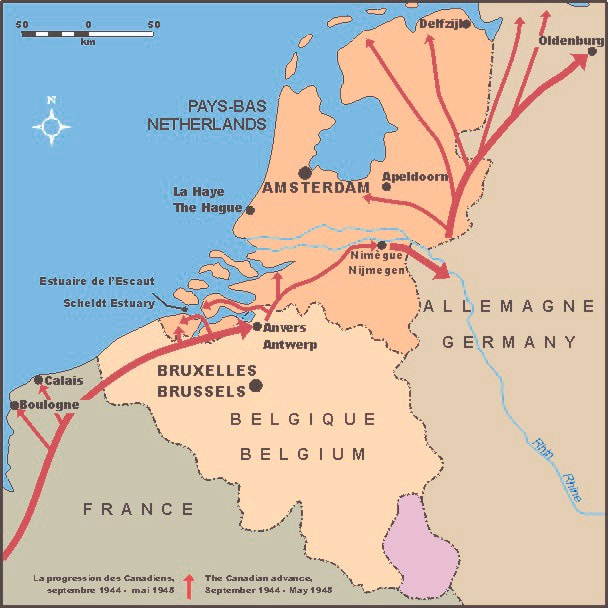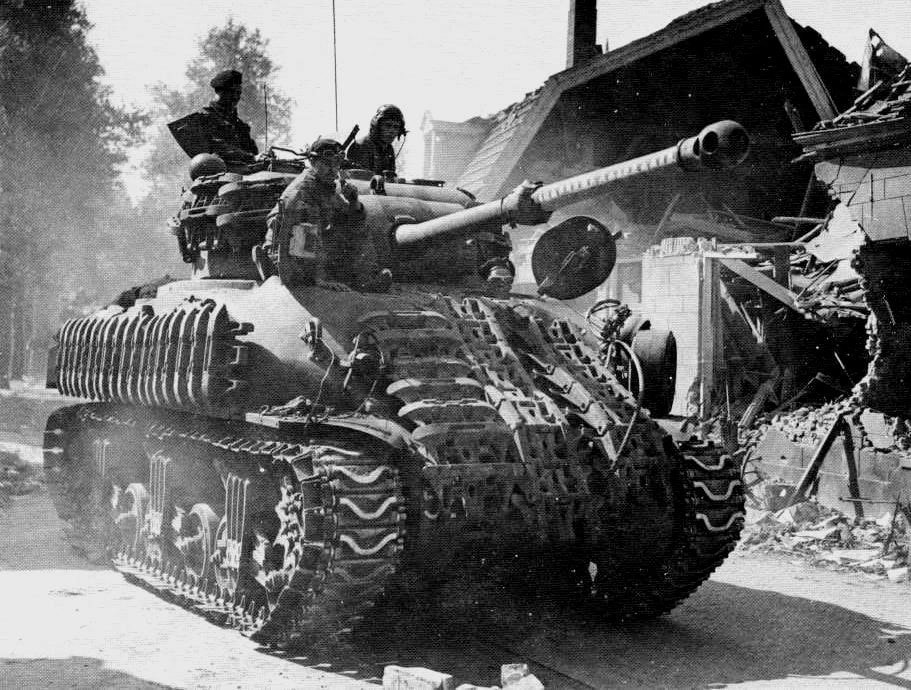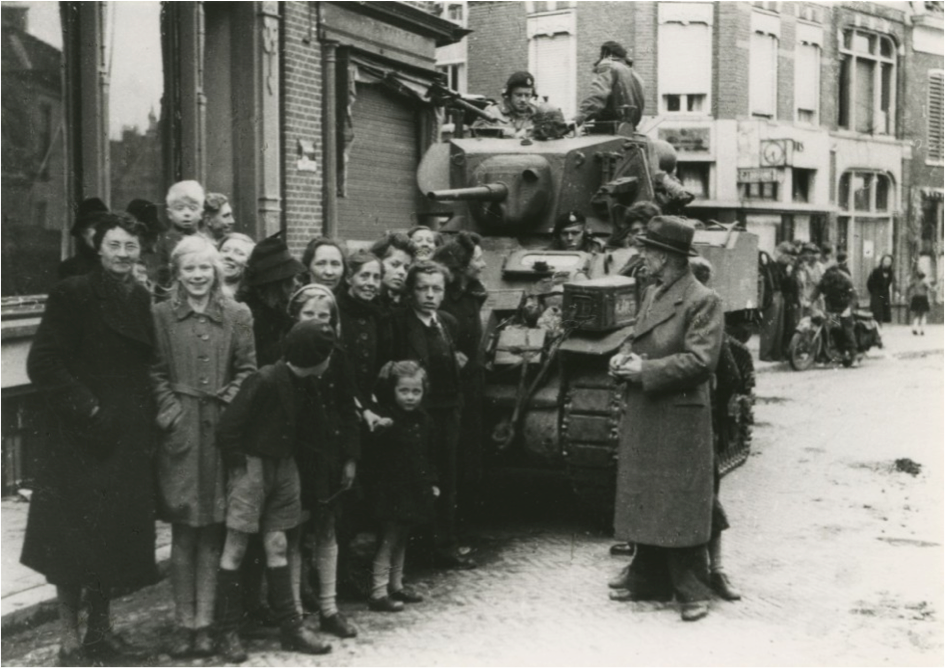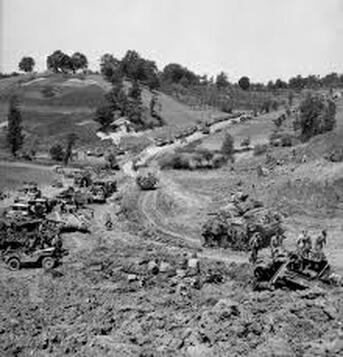The 8th Hussars, however, were given a different target. West of the Rhine lay the Netherlands, occupied still by German forces after years of war. The people were starving, weary of the brutality of their overlords. The 8th Hussars, along with other elements of the 1st Canadian Corps, were sent into the Kingdom of the Netherlands to cast off the German yoke.
As these patrols occurred, the rest of the regiment was preparing to move up. On the 12th of April, the Hussars were moving to the Ijsselmeer. The Canadians were tasked with seizing two bridgeheads in Arnhem and Apeldoorn. The Hussars themselves were actually sent into Germany, on their way to the Dutch town of Wehl. By the 14th, the British had taken Arnhem, and the Hussars entered the city. Amid its ruins, ravaged by the Germans during their departure, the Hussars received their orders. They, along with their sister regiments, were to clean out the 30-mile area between Arnhem and the Ijsselmeer in four days. It was, quite appropriately, named Operation Cleanser.
Their progress through the Dutch countryside was by no means easy. Their lines were rugged and tanks were lost to the elements or the enemy. Still, the blitzkrieg of Operation Cleanser pressed on, and, by the second day, were near to the city of Barneveld, just seven miles from the Ijsselmeer. There, the Hussars witnessed firsthand the tragedy of the German occupation. Hundreds of Dutch civilians were starving, while the traitorous Dutch S.S. were harassing the Hussars from the shelter of a nearby wood. A whole regiment of artillery focused their fire on the forest where the enemy took cover, and incinerated all but seven of the 300 contained therein.
The following day, the Canadians advanced to the town of Voorthuizen, from where they would move to take Putten and cut off the Germans in Holland from those in the eastern Netherlands. It was a turbulent day, but the 1st Division triumphed, with the town falling into Allied hands by evening. At the day's end, the 8th Hussars found themselves a mile from Putten and the sea. Behind them lay a trail of chaos extending back to Arnhem. Emboldened by their successes, the Colonel of the regiment ordered a night attack on Putten, the town where Operation Cleanser was to end. Putten was not to fall that night, however, as A Squadron rode into the town, they were ambushed by German troops and driven back. Their will unbroken, they regrouped, and, at 9 o' clock the next morning, the 8th Hussars took the town. After five years of Nazi oppression, the people of Putten rejoiced, taking to the streets and throwing their arms around their liberators.
Not long after taking Putten and closing the Allied line to the Ijsselmeer, the 8th Hussars were sent off again with the 5th Division to partake in one last great battle. In the northernmost part of Holland there lay the port of Delfzijl, a German stronghold boasting impressive fortifications and a garrison of 3000 men. By April 24th, the Regiment found themselves supporting four battalions of infantry surrounding the city, a struggle that lasted for eight days. Attack after attack moved through the sodden spring fields of Holland, waves of infantry followed by the great steel tanks of the Hussars. Each time the Germans would advance in counter-attack, and each time they were dispatched at point-blank range by the Canadians. Many tanks were lost in the muck, but still the advance continued, capturing guns and men, and seizing metre after metre of occupied territory. As the victorious hand of the Allied armies closed slowly around Nazi Germany, so too did the 5th Division, 8th Hussars included, close around the port of Delfzijl. Eventually, after eight days of blood and mud, the garrison of Delfzijl surrendered, marching out of the city in hundreds, and into the waiting arms of the 5th Division.



